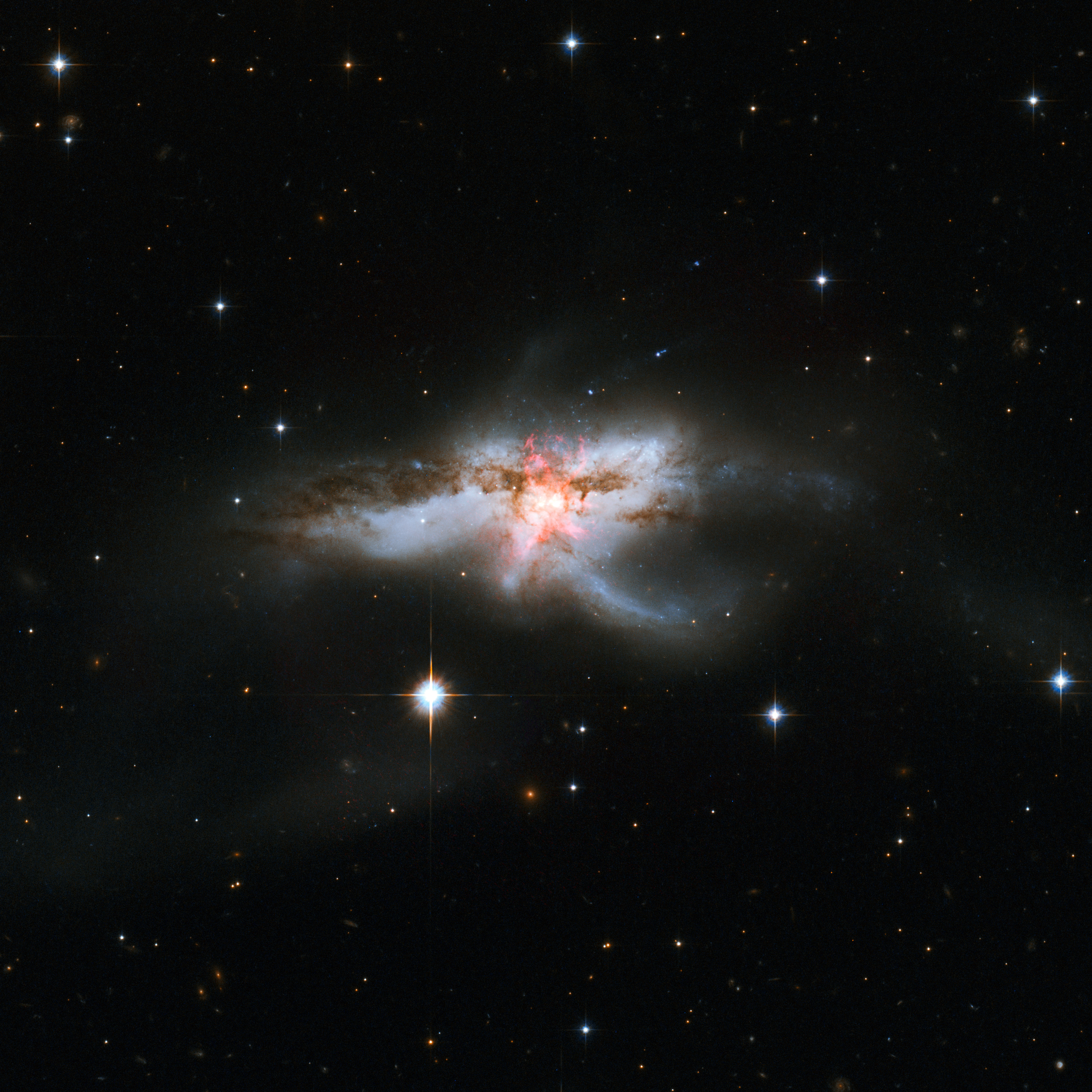Skip to comments.
Astronomy Picture of the Day- Government shutdown so no APOD Today. I will dig up some of my favorites - NGC 6240: Merging Galaxies
NASA ^
| 21 May, 2015
| Image Credit: NASA, ESA, Hubble Heritage (STScI / AURA), A. Evans (U. Virginia / NRAO / Stony Brook
Posted on 10/27/2025 11:40:29 AM PDT by MtnClimber
Explanation: NGC 6240 offers a rare, nearby glimpse of a cosmic catastrophe in its final throes. The titanic galaxy-galaxy collision takes place a mere 400 million light-years away in the constellation Ophiuchus. The merging galaxies spew distorted tidal tails of stars, gas, and dust and undergo fast and furious bursts of star formation. The two supermassive black holes in the original galactic cores will also coalesce into a single, even more massive black hole and soon, only one large galaxy will remain. This dramatic image of the scene is a composite of narrowband and near-infrared to visible broadband data from Hubble's ACS and WPC3 cameras, a view that spans over 300,000 light-years at the estimated distance of NGC 6240.
TOPICS: Astronomy; Science
KEYWORDS: apod; nasa
To be added or removed from the Astronomy Picture of the Day ping list please send me a request via "Private Reply" (Mail). For more detail go to the link and click on the image for a high definition image. You can then move the magnifying glass cursor then click to zoom in and click again to zoom out. When zoomed in you can scan by moving the side bars on the bottom and right side of the image.
To: MtnClimber
2
posted on
10/27/2025 11:40:54 AM PDT
by
MtnClimber
(For photos of scenery, wildlife and climbing, click on my screen name for my FR home page.)
To: 21stCenturion; 21twelve; 4everontheRight; A Navy Vet; A_perfect_lady; abb; AFB-XYZ; AFPhys; ...
Pinging the APOD list
🪐 🌟 🌌 🍔
3
posted on
10/27/2025 11:42:37 AM PDT
by
MtnClimber
(For photos of scenery, wildlife and climbing, click on my screen name for my FR home page.)
To: MtnClimber
These galaxies appear to be spinning in opposite directions. It would cause some spectacular head-on collisions between stars.
4
posted on
10/27/2025 11:42:52 AM PDT
by
MtnClimber
(For photos of scenery, wildlife and climbing, click on my screen name for my FR home page.)
To: MtnClimber
5
posted on
10/27/2025 11:43:37 AM PDT
by
Red Badger
(Homeless veterans camp in the streets while illegals are put up in 5 Star hotels....................)
To: MtnClimber
three black holes with the mass of 90 million suns.

6
posted on
10/27/2025 11:55:10 AM PDT
by
Diogenesis
(Si vis pacem, para bellum)
To: Diogenesis
It will cause some strong gravity waves when those black holes merge. We won’t be around to see it.
7
posted on
10/27/2025 12:05:05 PM PDT
by
MtnClimber
(For photos of scenery, wildlife and climbing, click on my screen name for my FR home page.)
To: MtnClimber
“...a mere 400 million light-years away...”
8
posted on
10/27/2025 1:17:31 PM PDT
by
Repeal The 17th
(Get out of the matrix and get a real life.)
To: Repeal The 17th
So that’s what they looked like 400 million years ago. By now they may have gone their separate ways. That light started traveling in this direction before the Age of the Dinosaurs started.
To: Verginius Rufus
10
posted on
10/27/2025 2:14:40 PM PDT
by
Repeal The 17th
(Get out of the matrix and get a real life.)
To: MtnClimber
CHAOS, on an intergalactic scale!
11
posted on
10/27/2025 2:26:41 PM PDT
by
telescope115
(Ad Astra, Ad Deum…)
To: MtnClimber
The night sky must be spectacular for those folks.
Disclaimer:
Opinions posted on Free Republic are those of the individual
posters and do not necessarily represent the opinion of Free Republic or its
management. All materials posted herein are protected by copyright law and the
exemption for fair use of copyrighted works.
FreeRepublic.com is powered by software copyright 2000-2008 John Robinson



